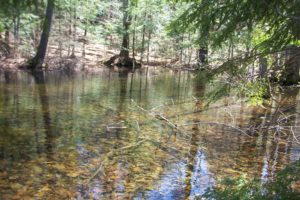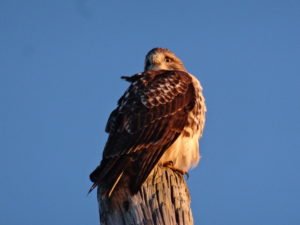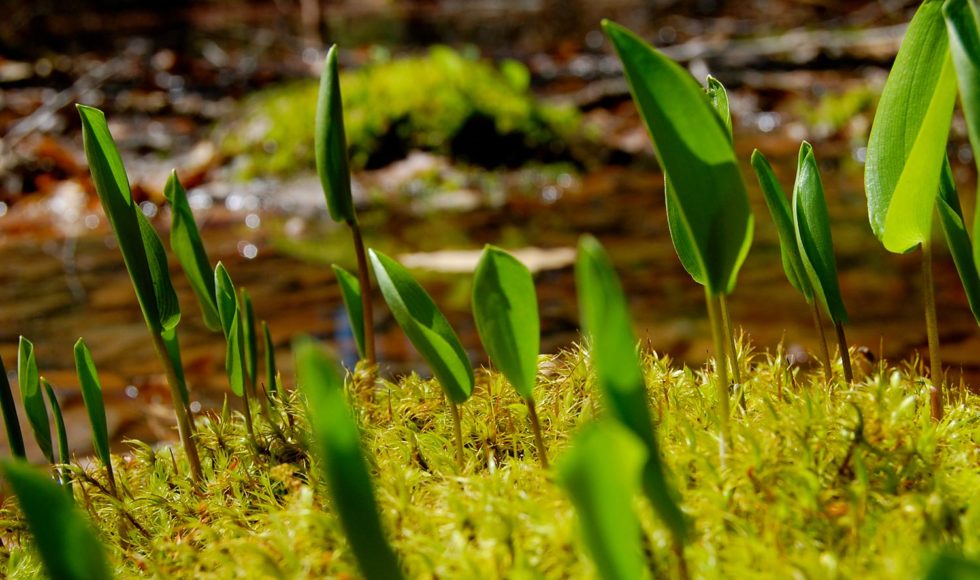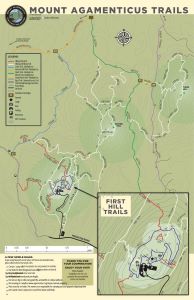 The Mount Agamenticus region is bustling with life throughout the year; however, there is no doubt that spring is the busiest time of the year. This is especially true for vernal pools and all of the critters that rely on this important habitat to survive. A vernal pool fills with winter snowmelt and rain to become a prolific breeding ground for many species of amphibians and invertebrates. Spotted salamanders, red spotted newts, wood frogs, and spadefoot toads are a few of the species that converge on the pool to mate and lay eggs. At night the woods surrounding the pools are filled with the choruses of spring peepers and wood frogs calling out from the pools, searching for mates. Their eggs begin to hatch in late spring and early summer.
The Mount Agamenticus region is bustling with life throughout the year; however, there is no doubt that spring is the busiest time of the year. This is especially true for vernal pools and all of the critters that rely on this important habitat to survive. A vernal pool fills with winter snowmelt and rain to become a prolific breeding ground for many species of amphibians and invertebrates. Spotted salamanders, red spotted newts, wood frogs, and spadefoot toads are a few of the species that converge on the pool to mate and lay eggs. At night the woods surrounding the pools are filled with the choruses of spring peepers and wood frogs calling out from the pools, searching for mates. Their eggs begin to hatch in late spring and early summer.
Please remember to drive carefully on your way to the mountain during the turtle migration from May-June.
Another important event that takes place here is the annual hawk migration. The summit of Mount A is a great place to set up a spotting scope and view the raptors passing by on their journey South. The ideal time to witness the spectacle is from late September to mid-October when there are Northwest winds and clear skies. Hawks come here to use the coast for guidance and to take advantage of the thermal lift that comes from Mount A. 
Although it is possible to see the hawks with the naked eye, using a spotting scope or binoculars can help with separating one species from another. Birds seen at Mount A include: broad-winged, sharp-shinned, red-tailed, Cooper’s, northern goshawks, and red-shouldered hawks, as wells as American kestrels, peregrine falcons, merlins, ospreys, bald eagles, and northern harriers. (turkey vultures do migrate, but not very far South.)
Mount Agamenticus is looking for volunteers to help count hawks and track their migration during the season. If you are interested in helping us become an official Hawkwatch site, please contact us.
Last modified: February 8, 2019



